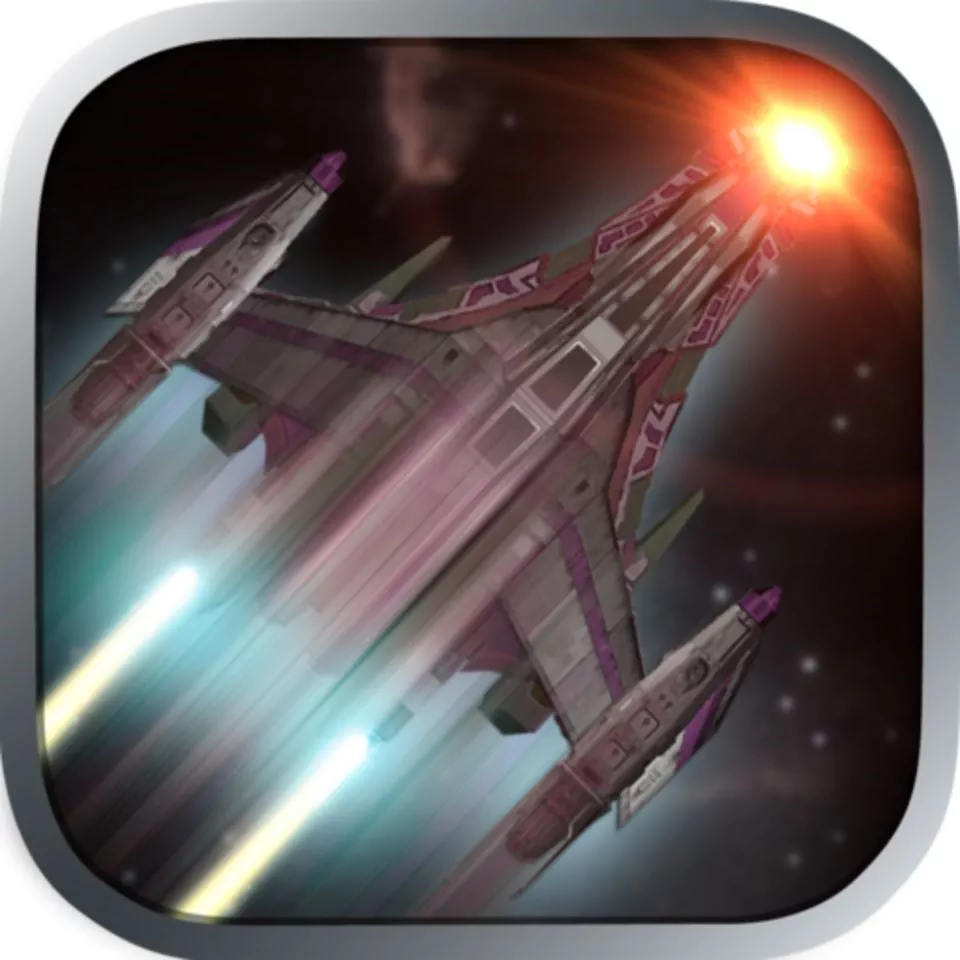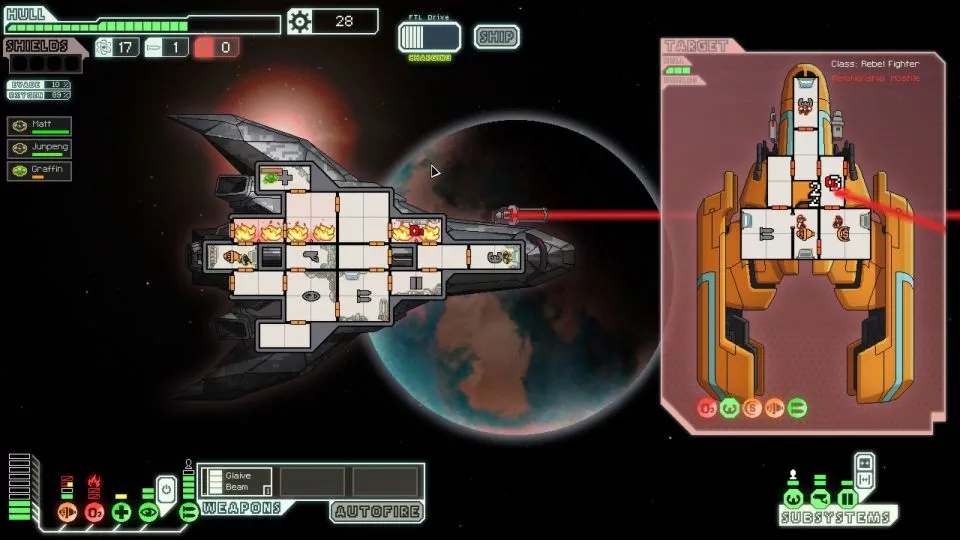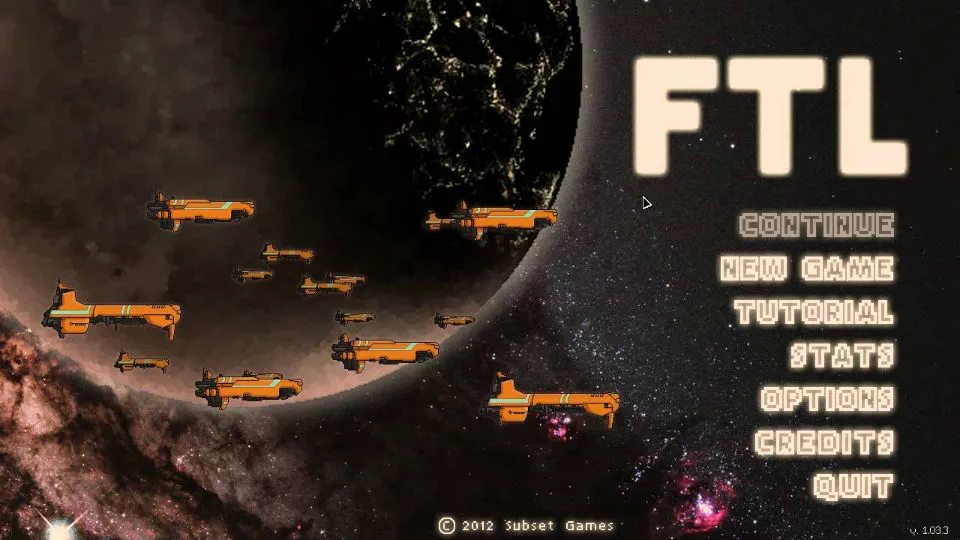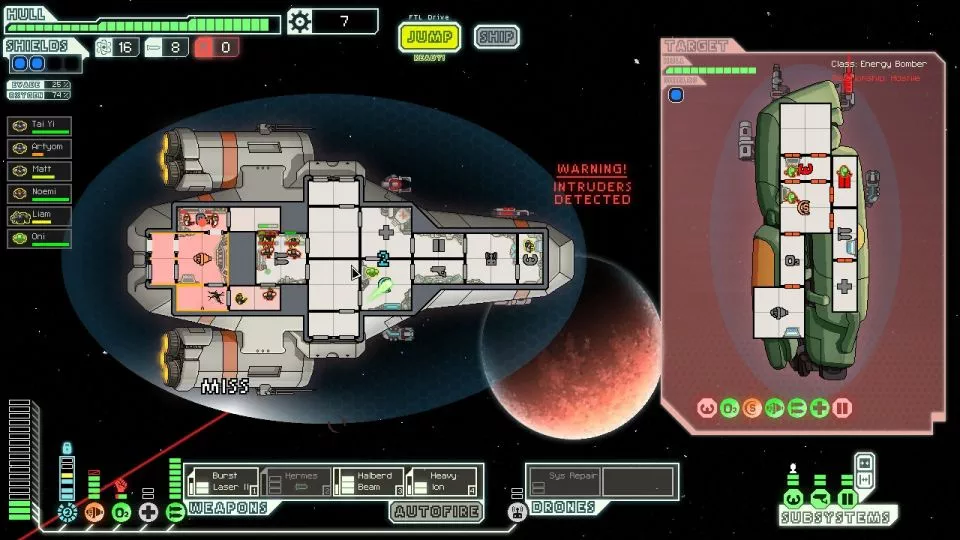Kerbal Space Program - PS4...
With news about Kerbal Space Program 2’s rele...
By Adonis Monahan3380

0

Introduction
FTL: Faster Than Light, more commonly known as just “FTL”, is a science-fiction, strategy, management, and action-adventure video game. It’s pretty unique as games go, and it takes elements from not just other video games, but from other forms of media as well.
Most of the gameplay involves the player controlling the crew of a spaceship and managing their jobs, as well as making executive decisions for where the spaceship travels and how it acts in combat with other spaceships. The decision-making process mainly occurs through explanatory text-crawls that the player chooses a response to, very much in the style of a table-top fantasy game.
FTL was first released in 2012 by indie video game developer Subset Games, with a free expansion FTL: Advanced Edition, being released in 2014 and containing an assortment of added mechanics, ships, and even a unique alien species. The game has very positive reviews from most critics, with an 82% rating for the PC version according to Metacritic.
Story?
FTL, being a text-based game for a large portion of the gameplay, has a nice supporting story for the player to go along with. In it, you control the crew of a vessel of the Galactic Federation, and having just acquired incredibly important tactical information about the weakness of the rebels threatening to overthrow the Federation, must race ahead of the rebel fleet as fast as possible to reach the capital of the Federation, all while upgrading your ship and surviving the other dangers that infest the galaxy along the way.
Players can, over time, unlock different ships and play with different species, all of which can be unlocked by exploring the different aliens’ unique storylines during different playthroughs.
FTL can sort of be described as a roguelike, in that there’s no long-term saving; games are quite short and end in under an hour, but the huge amount of dialogue choices and scenarios that encounter the player as they jump between travel nodes (called FTL, or faster than light travel nodes) make each playthrough unique, and adding all the different ships, weapons and upgrade schemes that the game allows for only serves to persuade the player into replaying FTL enough times to unlock all of the different game modes and explore all the possible quests.
Gameplay
FTL’s gameplay lends itself very much to the fact that it’s a strategy game. Although the player is in control of a spaceship, the player doesn’t get to control how it physically moves around on the screen, only the nodes in interplanetary space it travels to.
The player’s spaceship is displayed top-down on the screen, with the spaceship being divided into several different rooms, some of which can be occupied by ship systems like weapons, engine, piloting, shields, and so on. Players can then control the crew and choose which crew members get to run which systems, allowing them to gain experience and improve the performance of the system they are accustomed to.
This is in times of peace; more often than not, the player will be in the middle of a battle, and th combat system in FTL is quite simple and fun to play around with, if a bit intimidating at first. In combat, an enemy spaceship is displayed alongside the player’s spaceship. Players can control their weapons, choosing which enemy ship rooms or systems are targeted by the weapons, most of which act or behave differently.
There’s also a pause feature, where pressing the “space” key by default stops the gameplay and lets the player choose which commands to make without the pressure of time. Obviously, most actions take a finite amount of time, so pausing the game doesn’t necessarily remove the likely stressing and sweating that I often felt myself reaching when I was pausing between barrages that the enemy flagship was laying into my underprepared and unequipped spaceship.
 https://revyou.com/uploads/thumbnail-960/159286883383110483_05.webp
FTL: Faster Than Light - Game review
https://revyou.com/uploads/thumbnail-960/159286883383110483_05.webp
FTL: Faster Than Light - Game review https://revyou.com/uploads/thumbnail-960/1592868833832maxresdefault.webp
FTL: Faster Than Light - Game review
https://revyou.com/uploads/thumbnail-960/1592868833832maxresdefault.webp
FTL: Faster Than Light - Game review https://revyou.com/uploads/thumbnail-960/1592868833834original.webp
FTL: Faster Than Light - Game review
https://revyou.com/uploads/thumbnail-960/1592868833834original.webp
FTL: Faster Than Light - Game review
The most important thing about FTL, however, is planning ahead. This may sound counterintuitive for first-time players, but it’s totally in order for a roguelike. FTL is all about carefully managing your resources and crew, considering the most effective lines of upgrades for your spaceship without wasting your scrap (the closest equivalent to a unified currency in the cold reaches of interplanetary space), and even weighing the possible gains and losses of different situation choices, most of which aren’t constant across playthroughs.
I can’t tell you how many times I regretted letting my crew die fighting giant spiders on a neighboring space station because I thought the space station would give me enough scrap to make it worth my time. And that’s just the tip of the ice moon.
FTL is so diverse and complicated, and the gameplay is so wonderfully balanced, that there’s nothing quite like crawling through the map in the early levels to collect scrap while just staying ahead of the rebel fleet’s ships, and anxiously checking each shop, looking for a precious beam weapon.
It’s kind of hard to describe what about FTL makes me want to go for a second and third run each time, but I’m pretty sure the music and art are a big reason why.
Music and Art
There’s nothing quite like eerie, chiptune, melodies to set the tune for aimlessly meandering through space and exploring its vast open reaches. FTL’s music hits that target right in the bullseye, with music that is perfectly attuned to every scenario in the game.
Chilling with your crew after a battle as you wait for the FTL drive to recharge? There’s music for that. Fighting for your life as your crew struggle to extinguish the fires breaking out across the ship and consuming your precious oxygen? There’s music for that. And the art is another story completely. FTL takes a very minimalist, pixel-art style to its design (which, unfortunately, resides at an unsatisfactory, less than 1080p resolution), that just manages to convey the role-playing, fantasy atmosphere of the game perfectly. Even the backgrounds are great to look at, with a different moon or planet gracing the background of each level.
Conclusion
FTL: Faster Than Light is, for all intents and purposes, a role-playing game. You lead a spaceship of motley crew members as you race against an impossible foe to deliver an important message to important people and finish the game by defeating the source of all the evil.
But, it’s not about the destination in FTL. FTL is about the journey, about exploring all the different planets and the aliens that inhabit them. It’s about unlocking every ship and considering playing a drone-only playstyle or zapping all your enemies with lasers throughout the run.
FTL is rich, detailed, and perfectly balanced for long periods of gameplay, and it scratches the itch of science fiction, text-based role-playing games perfectly.
Updated 4 years ago